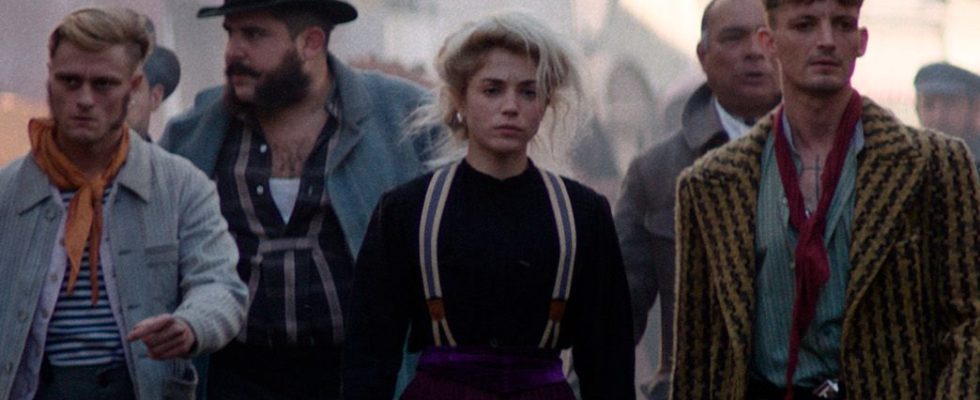He spent ten years of his life compiling the stories of the Apaches of Paris, the gangs that raged in Paris during the Belle Epoque, before embarking on writing an eponymous book on the subject. Jérémy Tessier, whose book was released in January by City editions, immerses its reader in the history of a little-known Paris, and draws parallels between the young people of the gangs of the beginning of the 20th century and those of today.
He is therefore a privileged expert to discuss with 20 minutes of Romain Quirot’s feature film, “Apache”, released in cinemas on Wednesday and which he has already viewed twice. “I was not associated with the creation part of the project, although I was consulted on the historical facts and on where and how to find old weapons and period furniture. I am more of a partner on the relay and promotion part of the film. We have been talking for more than a year and a half/two years”. Encounter.
For you, what are the characteristic passages of Romain Quirot’s film?
Jeremy Tessier : Making the old universe of Paris 1900 modern and punchy is a real success. The music, the rhythm, the images. But we really find the dirty side. It’s really the spirit of Paris 1900 where there were really street children, who at ten years old stole to live. Everything concerning the right to a child and centers for minors really developed at this time with new laws to protect them.
I really liked the idea that we see the Apaches through the prism of a woman, of her epic to try to become Apache, to integrate this environment of men, filled with codes.
There is a part of my book on the place of women and on the women’s gangs of the time, in particular that of Casque d’Or who was a prostitute who hung out with the Apaches. She remained famous because there was a gang war she was the object of. At the time, even if the women had a rather deplorable condition, some managed to make important places for themselves in the Apache bands.
How did you come to be interested in the Apaches of Paris?
Jeremy Tessier: I was passionate about the history of Paris. Ten years ago, I came across the Belle Epoque and the Apaches of Paris. I read a few articles on the subject and it made me want to dig. I gradually discovered this universe with the names of the bands, the Wolves of the Butte, the Monte-en-l’air of the Batignolles, the Heavyweights of the Villette. It gave me material to start a blog. The book is a conclusion around these years with the information that I was able to discover, digest and format. There is a lot of information on popular Paris of the 1900s but not necessarily very accessible or which requires a lot of sorting.
The book is an affordable summary of the world of the Apaches and all that was around at that time: the press, the police, the place of women, prisons, etc.
In your book, is there a particular story that stood out to you?
Jeremy Tessier: The one that particularly marked me is that of Milo. His name was Emile, he was a young Parisian. All his life, he was confronted with the problems experienced by young people from working-class neighborhoods at that time, that is to say, starting with petty theft, going to prison and developing his appetite for the world of crime, meeting more bigwigs, getting on burglaries. Gradually move towards serious crime. We follow his journey through the police reports and in the end, he ends up in prison in Cayenne.
When in fact, he is not a great criminal, he is a delinquent who did not know how to get out of it. There are not many stories where we have the full path of these young people of the time. But him, between his very early beginnings in delinquency and police reports, we follow his story in its entirety. He died at less than 25 years old. I think his story sums up well the paths of the young Apaches of the time. I found resonance there with the popular youth of today
How similar are there to the gangs of the Belle Epoque and the gangs of today?
Jeremy Tessier: They were young people who were in working-class areas of Paris, at the time Montmartre, Saint-Ouen… Who were immigrants. There was already a taste for dressing well, for parties, nicknames, slang that are found in the codes of today’s bands.
These offenders came from Spain, Belgium, Italy and so there are a lot of similarities between the two eras. Then also with the press of the time which favored the headlines, with newspapers printed in more than a million copies. I saw similarities with what you can find online, the attraction of the click.

